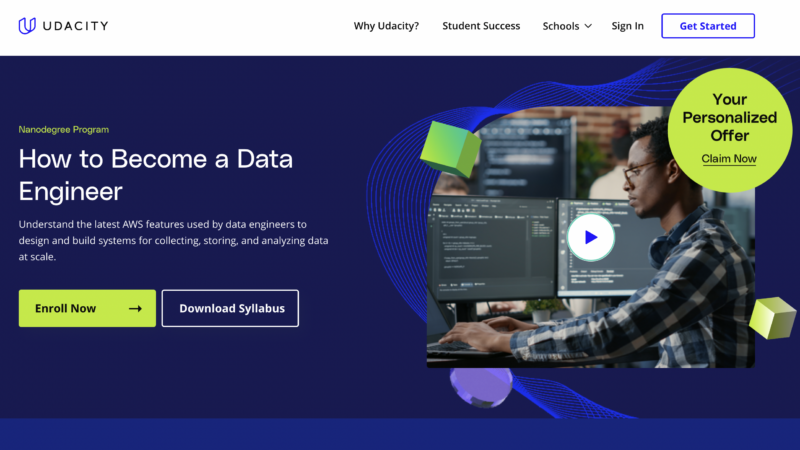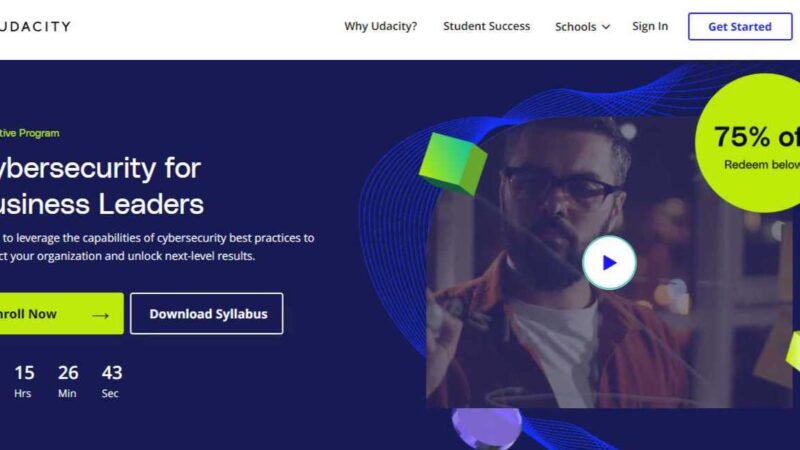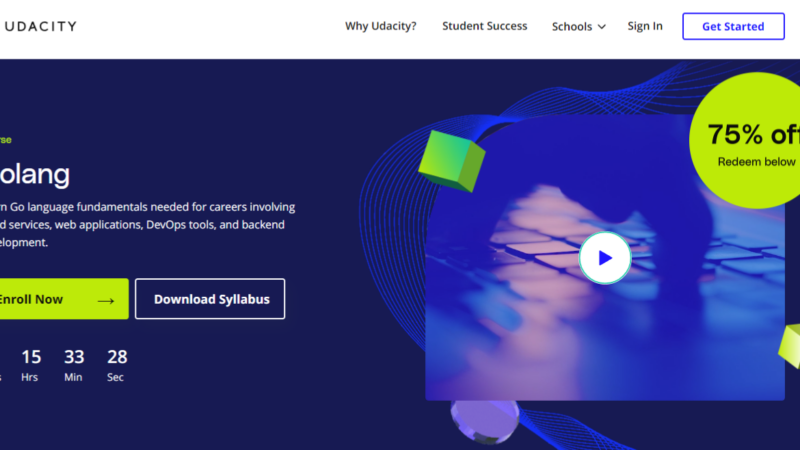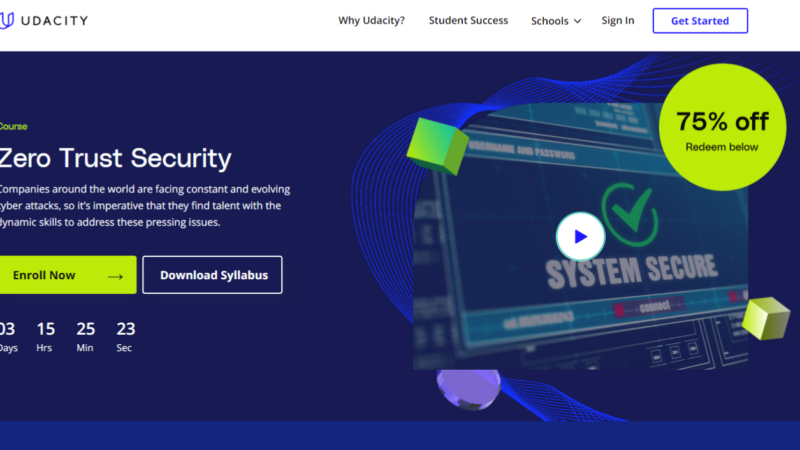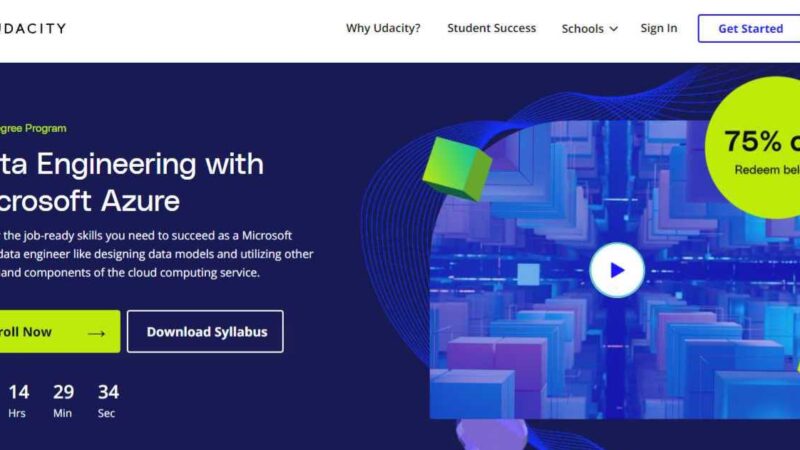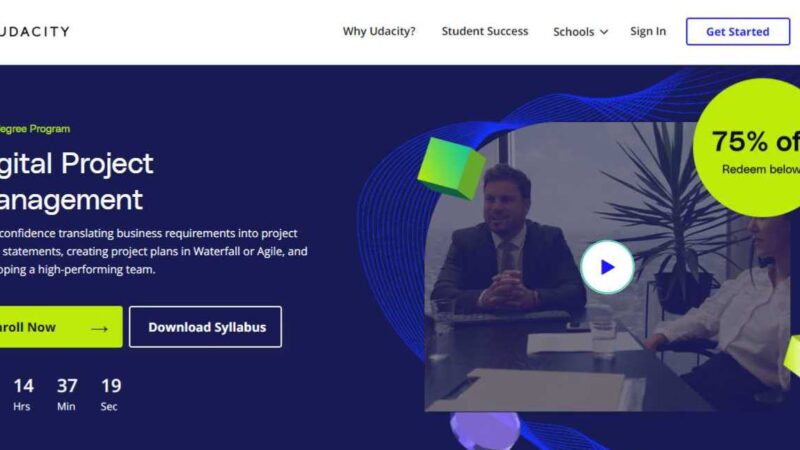Udacity Data Visualization Nanodegree Review

Data seems to be all the talk these days. We have to protect it and we have to understand it but, how on earth can we do that. Thanks to analysts that understand data like the back of their hand, transforming data into a readable and understandable tool for businesses is easier than ever. Businesses can take this data and get a better idea of their performance and how they can enhance to become more efficient. As a Data Visualization expert, you’ll understand how to use statistics and analytical tools along with Tableau to bring data to life. Every field out there is in need of a professional with this type of knowledge, helping them to understand how to better reach their audience.
To get started in a career of this kind, a background with statistics and the ability to make powerful datasets is a must, knowledge which you can find with the Data Visualization Nanodegree from Udacity. If you’ve not heard of the academy until now, we’ll tell you a bit about them along with a look into this course in particular. Included in our review is a look at the course and the job market, as we hope to give all you need before you sign up. A career change in a growing field can be yours, starting with a nanodegree from Udacity.
About Udacity
Udacity is an online academy that has continued to break the molds of online education by offering technological information in the form of mini courses. They came to life out of Stanford University with the goal of offering their courses to anyone anywhere. This was back in 2012, where all courses were free and knowledge covered was more surface level. Everything from the most basics of IT to more complicated concepts like AI and Deep Learning can now be found here. They are mostly known for their nanodegrees, which tend to focus more on only one area of the field. These are intended to be completed in shorter amounts of time, with the majority taking much less than a year to complete. Each of these nanodegrees is not only backed by the academy but, comes with a great deal of extras that aim to help learners complete the course.
Nanodegree Extras
Apart from a carefully constructed curriculum, you’ll score some extras from the academy that tend to set it apart from others. These extras include:
A community
Connect with other learners just like you to start making connections in the field. Use your peers to bounce ideas off or, seek help if you’re having difficulty keeping up with the course load. Along with the forum for learners, you’ll have access to a mentor that will be there to help in case you run into any technical difficulties.
Freedom and Flexibility
Each program comes without a set schedule, leaving you to make your own. Login and learn whenever you want taking advantage of the ability to take your learning on the go.
Real Industry Projects
Udacity creates their content in collaboration with industry leaders in hopes to create graduates that can confidently enter the workforce. Projects sewn into each course attempt to mirror those that you’ll find in the real world, keeping you competitive with other candidates out there.
Career Services
Professionals in career services will take a look at your resume and professional social sites like LinkedIn. They will help you polish these up so that you can be a strong competitor among others. Plus, you can schedule a mock interview where you’ll receive feedback that will help you blow your interviewer away.
The Instructors
Apart from the extras, Udacity attempts to set themselves apart by finding instructors that have impressive academic and professional backgrounds. Most of them have experience with top names in the world of technology, able to teach learners both what they need and how it will apply throughout their career. The instructors for this course are:
Mat Leonard
Currently, Mat is an instructional designer for Kaggle. Apart from his vast experience in the field, he also has experience as a physicist and neuroscientist where he began to dive into the world of data.
Josh Bernhard
As a data scientist for Nerd Wallet, he’s got a lot of good insight into the power of data. He’s got more than ten years of professional experience, including cancer research and process automation.
Robert Crocker
Currently employed with IBM, Robert has been in the game as a consultant for data visualization for over 7 years. He’s worked with Pinterest and Charles Schwab just to name a few and now works to provide personal clients with solutions that make their business practices run more efficiently.
Malavica Sridhar
Currently, she is senior project manager at CircleUp. In the game for more than 5 years, she’s built with Helio and ML Platform to help with companies on the rise.
Ben Jones
As the CEO of Data Literacy, his goal is to teach learners the language of code and data. Apart from his years of experience and formative industry evolution along the way, he is a successful author and professor, bringing his knowledge to anxious learners all across the globe.
The Prerequisites
Throughout this course, you’ll be working with data. This requires that you have some form of background and have a hold on the basic concepts including data analytics and some work with decoding statistical data. More specifically, your knowledge in statistics should include:
- Work with measures of center like: mean, median and mode
- The theme of spread including: variance and standard deviation
- Distribution including both normal and skewed
- Work with spreadsheets like Excel and Google Sheets
The Course
Get Acquainted with Data Visualization
There are lots of different ways to present data but, some are more effective than others. This all depends on what you’re looking to analyze and how you’re hoping to get that message across. You’ll get to see the differences that data representations can make and build your own dashboard at the end.
Designing Dashboards
In this part of the course, you’ll work to design a dashboard. Learn how to construct dashboards that give you important and useable information including user need and key metrics. This will eventually help you to create dashboards that appeal to particular audiences. End this section with a design of your own.
Storytelling with Data
Learn how to tell a story from start to finish in this section. You’ll see how the data and stats work together to help you construct an end to end analysis. You will define problems and use data and certain analysis to create the best representation possible, followed by identifying biases or limits. You will end this part building your own data story.
Advanced your Storytelling Abilities
Make your data come to life as you advance your storytelling skills. You’ll learn the ins and outs of Tableau, where you can add animations that bring all the details to life. By the end of this section, which is also the end of the course, you’ll be able to animate your own data story, getting as creative and innovative as your knowledge will allow.
The Time
A question that has probably come to mind is the time it takes to complete the course. You do get to take advantage of the fact that the academy offers flexible learning, giving you all the time you’d like. You will however want to rethink your approach, as the price has to do with the time you take. More on that in a bit.
While every learner has their own pace and ways in which they learn better Udacity has offered an estimate for the total amount of time it will take. They estimate that if you dedicate 10 hours a week, you can complete the course in four months. Again, you can take all the time you need, so long as you consider the cost.
The Cost
First, we’ll start off with a promotion currently up and running on the site. You’re quite lucky if you’re thinking about the course now or in the very near future, with Udacity offering a month of free access with both of their methods to pay. The methods they have available are 1) to pay as you go or 2) to bundle and save.
Pay as you go
With this option, you’re charged for each month of access. The price per month in this case is $359, and thanks to the current deal, takes place right after your first month. This could be a better deal if you can complete the course in shorter time than the Udacity recommended four months although it comes with an extra discount.
Udacity’s bundle and save
Just like any other business, when you bundle and pay up front, there is normally a discount involved. For this course, this is the case, with a 15% discount added in to drop the monthly price down to a little over $300 per month. When you take this deal, you’re actually paying for three total months at a discounted price, getting total access for four.
Reviews, What Have Learners Said?
This is a fairly new nanodegree program and was dropped only a year ago in May of 2019. Those who have taken the course seem to be satisfied, with overall positive feedback found across the web. For a look at what a few learners had to say, we’ve included their insights below:
“The written guides are clear and aesthetically pleasing. Although I usually expect a MOOC to have more lecture content, it turns out that it works well to present information about data visualization as text and visualizations (if done properly.). It helps that Udacity’s overhauled platform is easy to navigate and looks better than the old system they had a year or two ago.” – hamelg
“The program not only focuses on relevant data storytelling and visualization skills, but Udacity’s curriculum experts were also amazing at developing a truly engaging and valuable learning experience.” Ben Jones
The Job Market
When you have the skills that come with data visualization, a ton of markets are open to you. This is because companies of all types are working with data, more so as they make digital transformations. According to EDUCBA, average salaries can run anywhere from $90,000 up to $110,000 depending on the company and the incoming skillset of applicants.
As far as growth, an analysis of the outlook on a career in data visualizations by Best Colleges, showed that there is likely to be an 18% increase in demand through 2028. This means that there will surely be no shortage in the field, especially as more and more companies seek professionals with a background in data analysis and visualization. You could be stepping in at a time when creating readable data figures is on the rise, growing your skills as the demand and market grows.
The Take Away
The world relies on data these days. The ability to give companies a look into how they can improve their practices is a powerful tool. As the number of companies making this transition increase, so does the demand for those with the ability to covert it into readable and more understandable information.
This seems to be a good time to jump into the career, sharpening up your skills just in time to beat the peak. This will mean that you’re no longer entry level, eligible to apply your skills to more complex issues with top companies around the world. Udacity is an academy where you can start to develop those skills, that comes with a lot more than just an in-depth curriculum.
For us, it is not only the curriculum but the extras like career services that make us give Udacity a big thumbs up. They’ve teamed up with some powerhouses throughout their years, adding to the credibility and reputation. If flexible learning at a discounted price with expert instructors sounds like the type of program you’re after, you’ve certainly found it, here with Udacity.
Get Flat 65% with our exclusive link, Claim Now
